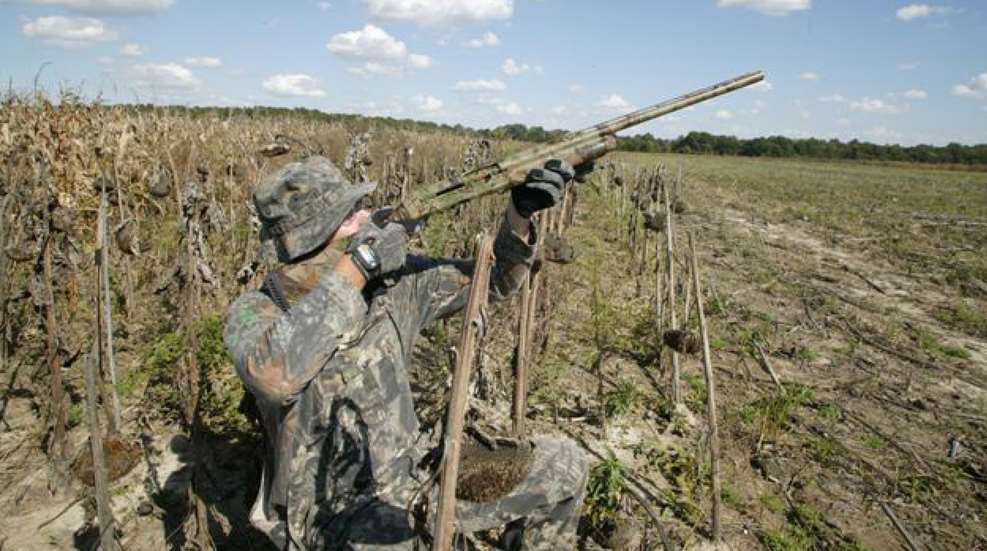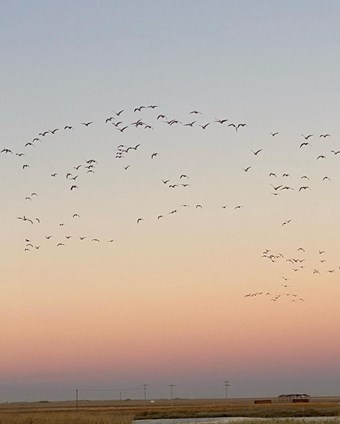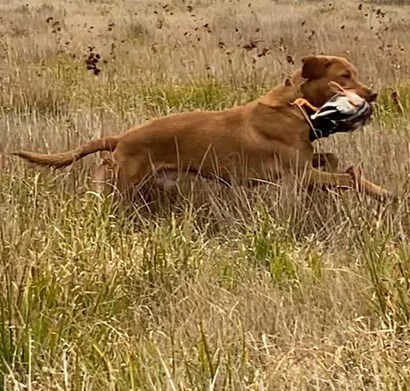
What is baiting and what is considered a baited field? These are the most common questions I get from migratory bird hunters. The first thing you must remember is that hunting migratory birds over bait is both a federal and a state violation in every U.S. state. According to the U.S. Fish and Wildlife Service (USFWS), “Baiting is the direct or indirect placing, exposing, depositing, distributing, or scattering of salt, grain, or other feed that could lure or attract waterfowl to, on, or over any areas where hunters are attempting to take them.” Additionally, according to the USFWS, “A baited area is any area on which salt, grain, or other feed has been placed, exposed, deposited, distributed, or scattered, if that salt, grain, or feed could serve as a lure or attraction for waterfowl.”

Baiting and hunting over a baited field are arguably the most confusing aspect of all hunting laws. An all-inclusive and thorough class on what constitutes baiting could easily be six to eight hours long! Baiting really starts to get confusing when crops and agricultural land is used for hunting. There are two things that hunters must be aware of regarding the law and baited areas. First thing is how long you must wait before you can legally hunt over an area that was previously baited. The second is the distance you can legally hunt from a baited area.
If an area is considered “baited” you must wait 10 days to legally hunt migratory birds over the property once all the bait is removed. It is determined that birds will still be attracted to the area up to 10 days once the bait is removed. This gives the migratory birds that were attracted to the bait time to adjust their flight patterns.
How far do you have to be from bait to legally hunt an area? Unfortunately, distance is up to the discretion of the game warden who is checking you! This is because there is no legislative set distance from bait in the law. The law prohibits hunting if the birds are being lured over you because of bait. It is possible to be hunting on your property and unbeknownst to you, the neighboring property is baited. Although you do not have the right to cross the fence and check for bait, you are still hunting over a baited field!
Baiting
It is easy to understand the definition of baiting. As stated above, it is the distribution of “salt, grain, or other feed” used to attract migratory birds. But baiting can also include egg or oyster shell, finely ground gravel, or any other thing that lures or attracts migratory birds. Baiting is not limited to just a food source.
Deer feeders can become problematic when hunting migratory birds. When deer feeders go off, they are attracting more than just deer. Migratory birds are also attracted to feeders. If you are hunting one end of the property for migratory birds and the birds are flying over you toward a feeder on the other side of the property, you are hunting over a baited area. You cannot simply turn off your deer feeder and hunt migratory birds. The feed would have to be cleaned up and you would have to wait the legislative 10 days before you could legally hunt migratory birds.
Planting and Agricultural Lands
Migratory birds can be hunted over fields of unharvested standing crops. You can also hunt over standing crops or over property of harvested crops that have been flooded. You can hunt migratory birds over any agricultural land in which the activities are conducted in accordance with recommendations of the State Extension Specialists of the Cooperative State Research, Education, and Extension Service of the U.S. Department of Agriculture (Cooperative Extension Service). This includes the presence of seed or grain that is scattered solely as the result of a normal agricultural planting, normal agricultural harvesting, normal agricultural post-harvest manipulation, or normal soil stabilization practice. This does not include the placement of seeds in piles or in a concentrated area.
The USFWS does not make a distinction of an agricultural field planted with the intent to harvest a crop, and those planted to attract wildlife so long as the planting is in accordance with recommendations from the Cooperative Extension Service. You must follow the recommended planting dates, proper seed distribution, seed bed preparation, application rate, and seed viability.
You can hunt migratory birds on or over areas where farmers feed grain to livestock, store grain, or engage in other normal agricultural practices, as long as it meets the definition of a normal agricultural planting, harvest, or post-harvest manipulation according to the Cooperative Extension Service.
Harvesting & Post-Harvest Manipulation 
Hunting over an area that is harvested is legal as long it was done in accordance with recommendations of the Cooperative Extension Service. In other words, the harvest was conducted in a normal agricultural process. This means that grain or other “bait” is present while hunting. This does not mean that the grain can be placed in piles or rows just for the purpose of hunting.
In the Midwest, the USFWS uses the example of swathing wheat crops in accordance with the Cooperative Extension Service. When swathing wheat, the crop is cut, placed into rows, and left in the field for several days until it dries. Hunting migratory birds over a swathed wheat field during the recommended drying period is legal. It would be illegal to hunt migratory birds over that same field when the wheat becomes unmarketable, or if left in the field past the recommended drying period.
Manipulation of Agricultural Crops
You cannot legally hunt migratory birds over manipulated agricultural crops unless it is part of the normal harvest and removal of the crop. Mowing, shredding, discing, or any other activity that results in the presence of seeds or grain because of crop manipulation prior to the normal harvest would be considered a baited area, and therefore unlawful to hunt. Additionally, if there is an interruption in the normal harvest process such as mechanical failure of equipment, hunting migratory birds over the are would be illegal. An example of this would be if a farmer reaps a portion of his field and then has an equipment failure, leaving a portion of the field unharvested, the whole field would be illegal to hunt over.
Wildlife Food Plots and Natural Vegetation
Wildlife food plots would be illegal to hunt migratory birds over where grain or seed has been distributed, scattered, or exposed because these plots are not normal agricultural plantings or normal soil stabilization practices. Wildlife food plots can be hunted over once the planted crop has germinated and there is no longer any seeds or grain scattered about the ground. Natural vegetation can be manipulated for the purposes of migratory birds. Natural vegetation is any non-agricultural, native, or naturalized plant that grows from planting or from existing, naturally occurring seeds.
It is very important to remember that it does not matter if you are hunting migratory birds in an agricultural setting, wetland or open field; you cannot do anything that disperses grains, seeds, or other attractants. This includes intentionally knocking down seeds from standing plants while setting decoys, setting up a blind, or driving to and from the area you are hunting. When you enter your hunting area, you must do so with the least amount of disturbance to the surrounding vegetation.
It is also important to remember that it is up to each hunter to know the laws and regulations of each species he or she is hunting. Follow the rules and you will not have to worry when that game warden suddenly shows up!














































